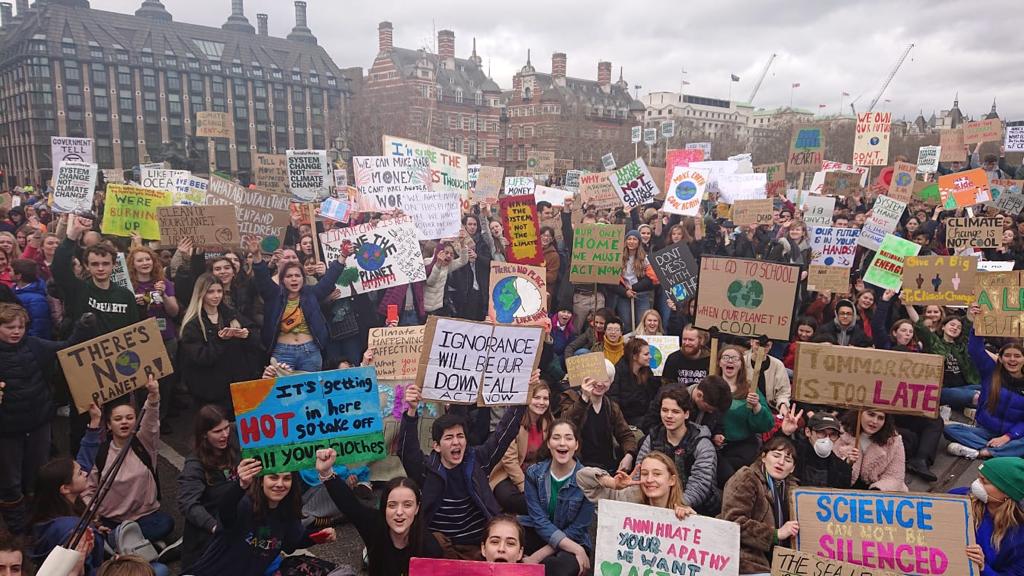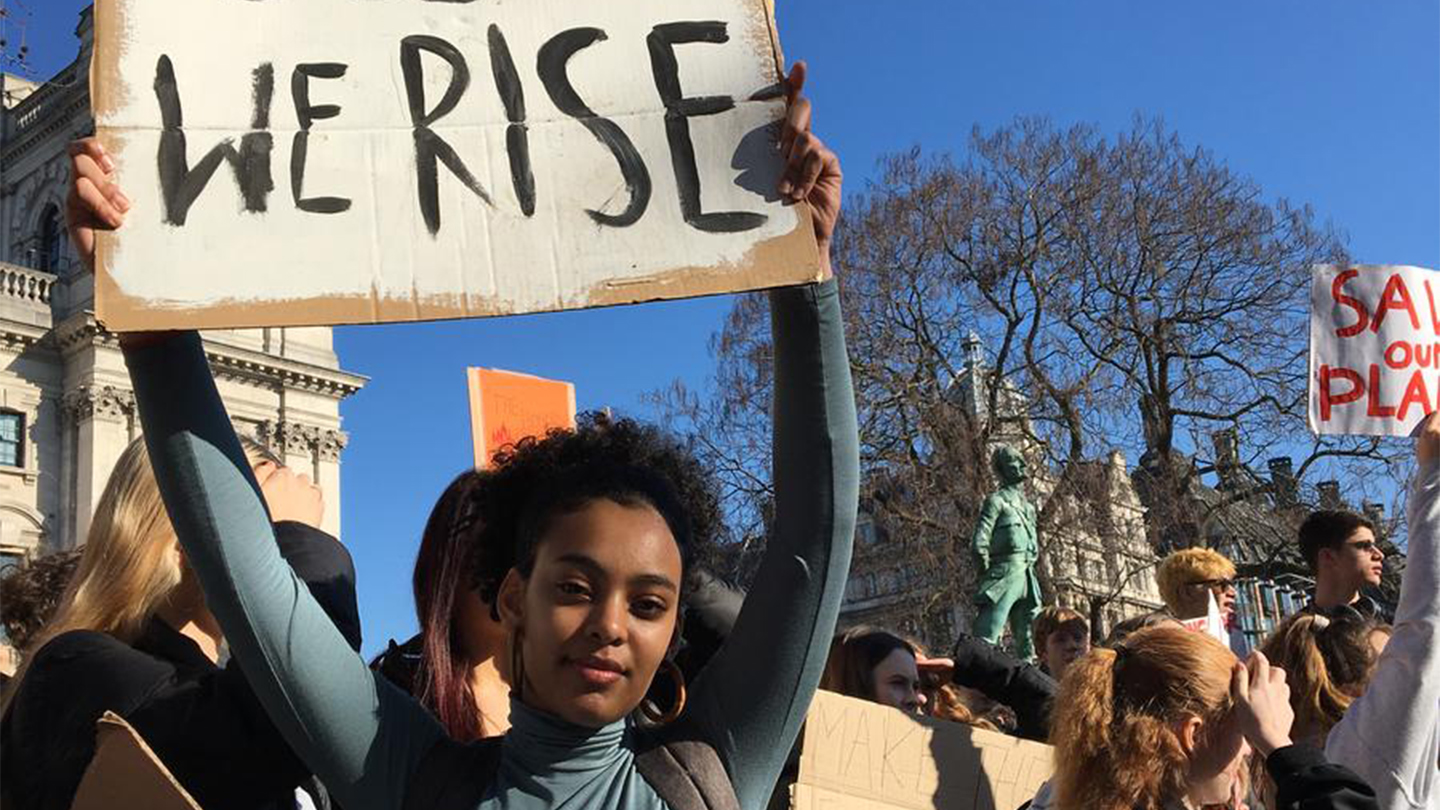Last month thousands of young people in the UK walked out of their classrooms to join the global youth strike for climate movement. The mood was electric as London’s streets were flooded with passionate, angry teenagers (and children), demanding more concerted action against our oncoming ecological apocalypse. And though my school days are long behind me, I joined the London strikes in Parliament Square in solidarity.
I’ve been a climate activist since my teens; I represented young people at the UN climate talks, trained activists from Edinburgh to Sao Paulo, and was the lead organiser of the People’s Climate Marches in 2014 and 2015. It was hard to contain the excitement I felt about joining and supporting the first injection of youth organising power into the movement since I first joined post COP15 in Copenhagen. But what I experienced at the 15 March strikes was unexpected, and is honestly something I’d long given up hope for: a truly diverse movement.
I’m a black woman and visibly Muslim, and this was the first time I’d participated in a climate action where I wasn’t a token of diversity. Everywhere I looked, the London I know and live in was reflected back. Young people from across this wonderfully diverse city, from all kinds of schools, social-economic and ethnic backgrounds and faiths, at a climate demonstration. What’s often been a visible domain of white, middle class activists felt new and refreshing. I walked around with tears of joy, trying to understand how the climate strikers had managed in just a few weeks to do what the NGO and environmental movement at large have strategised about for decades.
“One of the biggest downfalls of the mainstream climate movement in the UK has been its incessant focus on pure environmentalism. In order to effectively deal with the climate crisis, we must simultaneously confront the economic system. The same system that has kept us in austerity for over a decade.”
Listening to some of the strikers addressing the crowd, it became clear that having an intersectional and diverse movement wasn’t just a coincidence, it’s actually key to the existence of the strikes. For too long the climate movement in the global north has paid lip service to diversity — it has been a ‘nice to have, not a need to have’ issue. But today’s movement couldn’t be further away from that laissez-faire attitude. The young people taking to the streets a few weeks ago weren’t just calling for an end to extractive industries, they were harmonising the struggles of all our communities by calling for climate justice; a revolution in our values, a change to our system and our politics.
One of the biggest downfalls of the mainstream climate movement in the UK has been its incessant focus on pure environmentalism. It has chosen to ignore that in order to effectively deal with the climate crisis, we must simultaneously confront the economic system. The same system that has kept us in austerity for over a decade, the same system that’s keeping inner-city children inside because the air in their playgrounds is too toxic to breathe. The same system that’s resulted in people in the UK experiencing some of the highest levels of fuel poverty in Europe. The government’s economic choices are leaving our elderly to die in their thousands because they can’t afford to heat their homes. In their refusal to take the inherently political climate justice approach, because it threatens their politically neutral organising base and their ability to influence environmental policy from within the tent of the political mainstream, mainstream NGOs have excluded working class and ethnic minority communities from the climate movement. This approach tells them that their struggles come secondary to the environment, when the truth is, it’s all interconnected.

It’s that age-old saying that has to date not effectively transformed the movement: system change not climate change. There’s no negotiating with capitalism and that notion runs through the strikers’ veins. Right now ours is the first generation likely to be worse off than their parents, in so many ways, not least of which is living on a planet in peril.
Today’s strikers are at last fiercely political; standing up to a Westminster system that has concentrated power, pitted communities against each other, and is turning its back on Europe. They are fighting isolationism by organising in communities across the UK and working closely with young people in Europe and beyond. If nothing else, the climate strikes have been an example of what it means to be in solidarity. “Those in power are not only betraying us, and taking away our future, but are responsible for the climate crisis that’s unfolding in horrendous ways around the world,” explains Anna Taylor, the 17-year-old co-founder of the UK Student Climate Network.
None of this is new, in theory, but the climate strikers are finally putting it into practice on a grand scale. Their clarion call for climate justice rooted in historical responsibility is unbound from political feasibility, and their imagination is unclipped by a need to satisfy a mostly white and middle class donor base. Because of this, they are heralding in the movement so many people like me have dreamed of: a wide movement that acts as an umbrella that houses and nourishes all struggles, not one that acts like a vacuum.

